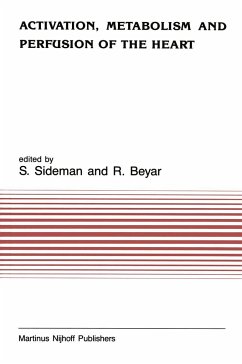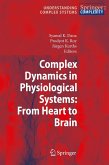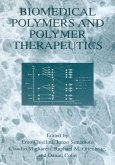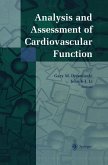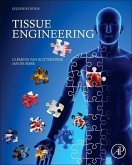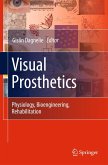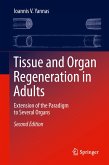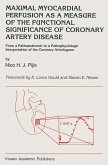S. Sideman / Rafael Beyar (eds.)
Activation, Metabolism and Perfusion of the Heart
Simulation and Experimental Models
Herausgegeben:Sideman, S.; Beyar, Rafael
S. Sideman / Rafael Beyar (eds.)
Activation, Metabolism and Perfusion of the Heart
Simulation and Experimental Models
Herausgegeben:Sideman, S.; Beyar, Rafael
- Gebundenes Buch
- Merkliste
- Auf die Merkliste
- Bewerten Bewerten
- Teilen
- Produkt teilen
- Produkterinnerung
- Produkterinnerung
The basic mechanism underlying directional differences in excitability, con duction velocity, andsafetyfactor thatleadtocircusmovementreentry incardiac muscle is generally attributed to a spatial difference in the refractory period as originally described by Mines [1] or to a depressed segment as described by Schmitt and Erlanger [2]. A departure from this depolarization in cardiac muscle involve quantities, such as Vmax' that are not directly descriptive of the underlying mechanisms of propagation.
Andere Kunden interessierten sich auch für
![Complex Dynamics in Physiological Systems: From Heart to Brain Complex Dynamics in Physiological Systems: From Heart to Brain]() Complex Dynamics in Physiological Systems: From Heart to Brain147,99 €
Complex Dynamics in Physiological Systems: From Heart to Brain147,99 €![Biomedical Polymers and Polymer Therapeutics Biomedical Polymers and Polymer Therapeutics]() Emo Chiellini / Junzo Sunamoto / Claudio Migliaresi / Raphael M. Ottenbrite / Daniel Cohn (Hgg.)Biomedical Polymers and Polymer Therapeutics194,99 €
Emo Chiellini / Junzo Sunamoto / Claudio Migliaresi / Raphael M. Ottenbrite / Daniel Cohn (Hgg.)Biomedical Polymers and Polymer Therapeutics194,99 €![Analysis and Assessment of Cardiovascular Function Analysis and Assessment of Cardiovascular Function]() DrzewieckiAnalysis and Assessment of Cardiovascular Function125,99 €
DrzewieckiAnalysis and Assessment of Cardiovascular Function125,99 €![Tissue Engineering Tissue Engineering]() Clemens van BlitterswijkTissue Engineering220,99 €
Clemens van BlitterswijkTissue Engineering220,99 €![Visual Prosthetics Visual Prosthetics]() Gislin Dagnelie (Hrsg.)Visual Prosthetics74,99 €
Gislin Dagnelie (Hrsg.)Visual Prosthetics74,99 €![Tissue and Organ Regeneration in Adults Tissue and Organ Regeneration in Adults]() Ioannis V. YannasTissue and Organ Regeneration in Adults74,99 €
Ioannis V. YannasTissue and Organ Regeneration in Adults74,99 €![Maximal Myocardial Perfusion as a Measure of the Functional Significance of Coronary Artery Disease Maximal Myocardial Perfusion as a Measure of the Functional Significance of Coronary Artery Disease]() N. H. PijlsMaximal Myocardial Perfusion as a Measure of the Functional Significance of Coronary Artery Disease63,99 €
N. H. PijlsMaximal Myocardial Perfusion as a Measure of the Functional Significance of Coronary Artery Disease63,99 €-
-
-
The basic mechanism underlying directional differences in excitability, con duction velocity, andsafetyfactor thatleadtocircusmovementreentry incardiac muscle is generally attributed to a spatial difference in the refractory period as originally described by Mines [1] or to a depressed segment as described by Schmitt and Erlanger [2]. A departure from this depolarization in cardiac muscle involve quantities, such as Vmax' that are not directly descriptive of the underlying mechanisms of propagation.
Hinweis: Dieser Artikel kann nur an eine deutsche Lieferadresse ausgeliefert werden.
Hinweis: Dieser Artikel kann nur an eine deutsche Lieferadresse ausgeliefert werden.
Produktdetails
- Produktdetails
- Developments in Cardiovascular Medicine 70
- Verlag: Springer / Springer Netherlands
- Artikelnr. des Verlages: 978-0-89838-871-8
- 1987.
- Seitenzahl: 725
- Erscheinungstermin: 31. Juli 1987
- Englisch
- Gewicht: 1490g
- ISBN-13: 9780898388718
- ISBN-10: 0898388716
- Artikelnr.: 27619554
- Herstellerkennzeichnung
- Produktsicherheitsverantwortliche/r
- Europaallee 1
- 36244 Bad Hersfeld
- gpsr@libri.de
- Developments in Cardiovascular Medicine 70
- Verlag: Springer / Springer Netherlands
- Artikelnr. des Verlages: 978-0-89838-871-8
- 1987.
- Seitenzahl: 725
- Erscheinungstermin: 31. Juli 1987
- Englisch
- Gewicht: 1490g
- ISBN-13: 9780898388718
- ISBN-10: 0898388716
- Artikelnr.: 27619554
- Herstellerkennzeichnung
- Produktsicherheitsverantwortliche/r
- Europaallee 1
- 36244 Bad Hersfeld
- gpsr@libri.de
Electrical activation and propagation.- 1. Use of computer simulations for combined experimental-theoretical study of anisotropic discontinuous propagation at a microscopic level in cardiac muscle.- 2. The role of the interstitial space in electrical models of cardiac sources.- 3. Parasympathetic control of the SA node cell in rabbit heart - a model.- 4. Effects of the discrete cellular structure on electrical propagation in cardiac tissue.- 5. Electrical field model for electric interactions between myocardial cells.- 6. The role of distributed conduction velocities in simulated epicardial activation maps.- 7. Effects of anisotropy on functional reentrant circuits: preliminary results of computer simulation studies.- 8. Interaction of oscillatory currents and steady-state membrane conductance in isolated cardiac myocytes: experimental description and preliminary modeling of syncytial effects.- 9. General discussion.- Electrical and mechanical interactions.- 10. Influence of pacing site on ventricular mechanics.- 11. Effect of alterations of the left ventricular activation sequence on left ventricular performance.- 12. Effect of the thyroid state on ventricular action potential characterictics in the mammalian heart.- 13. Mechano-electric coupling in myocardium and its possible role in ischaemic arrhythmia.- 14. Tetanization of intact hearts: a new strategy for studying the response of the contractile proteins to calcium.- 15. Modulation properties of myocardial contractile proteins.- 16. Insight into excitation-contraction coupling of heart derived from studies of the force-interval relationship.- 17. Model of Ca release mechanism from the sarcoplasmic reticulum: Ca-mediated activation, inactivation and reactivation.- Microstructure and macroscale mechanics.- 18. Athree dimensional constructive law for the passive myocardium based on a microstructural approach.- 19. 3-D simulation of left ventricular contraction combining myocardial mechanics and electrical activation.- 20. The mechanical effects of the pericardium on the left ventricle.- 21. Conversion of fiber stress to global left ventricular pump work.- Micro to macro coronary circulation.- 22. An analysis of a vascular arborization model for the microcirculation.- 23. Delineating coronary hemodynamic mechanisms by computer simulation.- 24. Distensibility of microvasculature and its consequences on coronary arterial and venous flow.- 25. Impedance to coronary flow.- 26. Intramyocardial blood volume - implications for analysis of myocardial mechanical characteristics via in vivo imaging of the heart.- 27. The effect of wall forces on coronary flow.- 28. Experimental validation studies related to clinical applications of cine computed tomography.- Dysfunction of the diseased ventricle: mechanical and metabolic aspects.- 29. Regional ventricular function in myocardial ischemia.- 30. Simulation of the mechanics of an infarcted left ventricle.- 31. Nonischemic dysfunction at the lateral margins of ischemic myocardium.- 32. Assisted circulation as a tool for the stuy of cardiac models and cardiac performance.- 33. Modulation of coronary autoregulatory responses.- 34. Is stunned myocardium energy deficient?.- 35. Concentric left ventricular hypertrophy: a simulation study of mechanics related to transmural oxygen demand and perfusion.- 36. Coronary reserves in myocardial hypertrophy.- Basic phenomena in transport and metabolism.- 37. Making mathematical descriptions of metabolic reaction networks manageable.- 38. Integrated phenomenology of transport, permeation, and metabolicreactions in the heart.- 39. Transport between myocardial capillaries and cardiac lymphatics.- 40. Disturbances in myocardial lipid homeostasis during ischemia and reperfusion.- 41. Heat transfer and temperature profiles during ischemia and infarction in the left ventricular wall.- Clinical implications.- 42. Longterm assessment and management of chronic cardiac failure.- 43. Acute and chronic cardiac failure: the oxygen transport system gone awry.- General discussion.- 44. Interactions: mechanics, metabolism and perfusion.- 45. Relating models to experiments.- Concluding remarks.- Index of subjects.
Electrical activation and propagation.- 1. Use of computer simulations for combined experimental-theoretical study of anisotropic discontinuous propagation at a microscopic level in cardiac muscle.- 2. The role of the interstitial space in electrical models of cardiac sources.- 3. Parasympathetic control of the SA node cell in rabbit heart - a model.- 4. Effects of the discrete cellular structure on electrical propagation in cardiac tissue.- 5. Electrical field model for electric interactions between myocardial cells.- 6. The role of distributed conduction velocities in simulated epicardial activation maps.- 7. Effects of anisotropy on functional reentrant circuits: preliminary results of computer simulation studies.- 8. Interaction of oscillatory currents and steady-state membrane conductance in isolated cardiac myocytes: experimental description and preliminary modeling of syncytial effects.- 9. General discussion.- Electrical and mechanical interactions.- 10. Influence of pacing site on ventricular mechanics.- 11. Effect of alterations of the left ventricular activation sequence on left ventricular performance.- 12. Effect of the thyroid state on ventricular action potential characterictics in the mammalian heart.- 13. Mechano-electric coupling in myocardium and its possible role in ischaemic arrhythmia.- 14. Tetanization of intact hearts: a new strategy for studying the response of the contractile proteins to calcium.- 15. Modulation properties of myocardial contractile proteins.- 16. Insight into excitation-contraction coupling of heart derived from studies of the force-interval relationship.- 17. Model of Ca release mechanism from the sarcoplasmic reticulum: Ca-mediated activation, inactivation and reactivation.- Microstructure and macroscale mechanics.- 18. Athree dimensional constructive law for the passive myocardium based on a microstructural approach.- 19. 3-D simulation of left ventricular contraction combining myocardial mechanics and electrical activation.- 20. The mechanical effects of the pericardium on the left ventricle.- 21. Conversion of fiber stress to global left ventricular pump work.- Micro to macro coronary circulation.- 22. An analysis of a vascular arborization model for the microcirculation.- 23. Delineating coronary hemodynamic mechanisms by computer simulation.- 24. Distensibility of microvasculature and its consequences on coronary arterial and venous flow.- 25. Impedance to coronary flow.- 26. Intramyocardial blood volume - implications for analysis of myocardial mechanical characteristics via in vivo imaging of the heart.- 27. The effect of wall forces on coronary flow.- 28. Experimental validation studies related to clinical applications of cine computed tomography.- Dysfunction of the diseased ventricle: mechanical and metabolic aspects.- 29. Regional ventricular function in myocardial ischemia.- 30. Simulation of the mechanics of an infarcted left ventricle.- 31. Nonischemic dysfunction at the lateral margins of ischemic myocardium.- 32. Assisted circulation as a tool for the stuy of cardiac models and cardiac performance.- 33. Modulation of coronary autoregulatory responses.- 34. Is stunned myocardium energy deficient?.- 35. Concentric left ventricular hypertrophy: a simulation study of mechanics related to transmural oxygen demand and perfusion.- 36. Coronary reserves in myocardial hypertrophy.- Basic phenomena in transport and metabolism.- 37. Making mathematical descriptions of metabolic reaction networks manageable.- 38. Integrated phenomenology of transport, permeation, and metabolicreactions in the heart.- 39. Transport between myocardial capillaries and cardiac lymphatics.- 40. Disturbances in myocardial lipid homeostasis during ischemia and reperfusion.- 41. Heat transfer and temperature profiles during ischemia and infarction in the left ventricular wall.- Clinical implications.- 42. Longterm assessment and management of chronic cardiac failure.- 43. Acute and chronic cardiac failure: the oxygen transport system gone awry.- General discussion.- 44. Interactions: mechanics, metabolism and perfusion.- 45. Relating models to experiments.- Concluding remarks.- Index of subjects.

